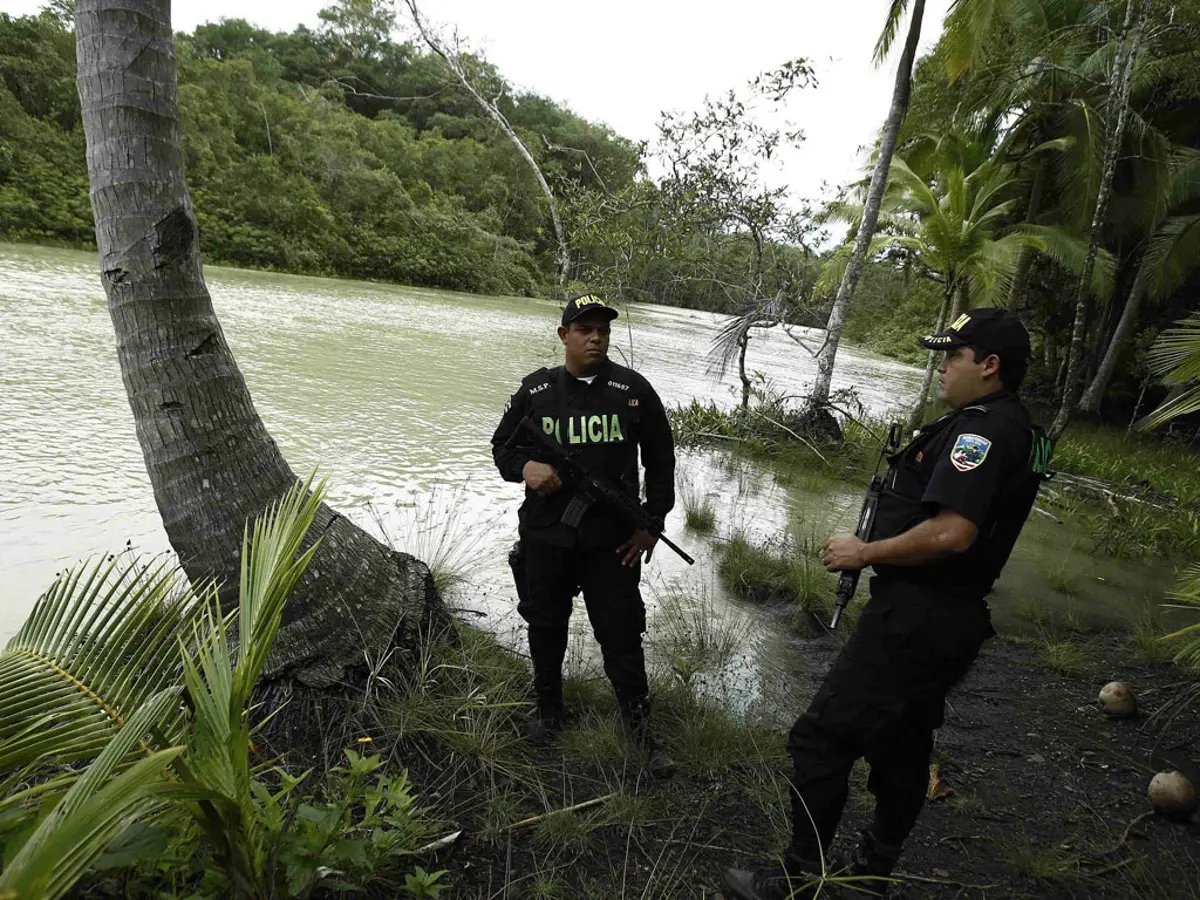A few years ago, LatAmThought wrote about the balloon effect, which argues that cutting down on the production of drugs in one area simply pushes their cultivation elsewhere.
The same may be said of the transportation of drugs.
On 12 January, the AP reported on the investigation of an armed group suspected of being involved with drug trafficking in the Osa Peninsula, in the far south of Costa Rica.
According to the AP, early in the morning of 10 January a group of 15 heavily armed persons entered a property in the San Josecito area, located just north of Corcovado National Park.
Local reporting from La Nacion, a San Jose-based daily, digs deeper into the story:
At 4 AM on Monday, 15 unknown people entered the territory and threatened the caretaker, telling him that if he did not leave, they would kill him.
The intruders added that they had been sent to take care of the area and would fire upon anybody who passed by.
Local residents tell La Nacion that there is a ‘command’ of men who are in the area, who are able to walk freely, even ‘buying cigarettes’ from a local tienda. Costa Rica’s Judicial Investigative Body (OIJ) says the investigation has ‘just begun’. Whether they are in fact linked to the drug trade remains to be seen.
As the AP story points out, the Osa Peninsula’s isolation puts it largely off the path of drug trafficking, a problem that Costa Rican authorities are attempting to confront. In December, Costa Rica and Panama signed an agreement to create a bi-national commission along their shared border to combat drug and persons trafficking, particularly in Paso Canoas, a nod to the shared concern about increases in drug trafficking in Costa Rica.
Yet the isolation of the finca in question, as well as its access to the sea, make it an ideal place for smugglers looking to stay below the radar to make landfall with illicit merchandise. As traditional drug trafficking routes become more and more patrolled, smugglers may look for other pathways.
Evidence of this comes from the the UN Office on Drugs and Crime (UNODC) 2010 report on the global cocaine market. The report demonstrates how seizures of cocaine have shifted from the Caribbean to Central America over the last 25 years (Figure 33 in the previous link). The same report shows that production has remained relatively stable and that seizures have increased, particularly within the last few years (fig. 22 and 23).
The data suggests that when the Caribbean routes to Miami were no longer viable, smugglers took to Mexico and Central America. As Central America becomes an increasing hot spot for drug trafficking activity, this may begin to happen at a micro level.

Reply